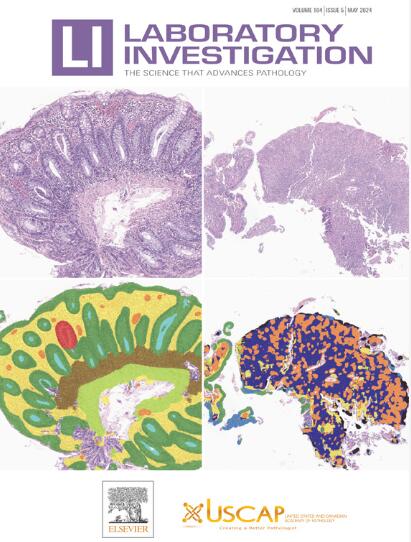Association of the BRAFV600E Mutation With Morphology and Heterogeneity in Melanoma
IF 4.2
2区 医学
Q1 MEDICINE, RESEARCH & EXPERIMENTAL
引用次数: 0
Abstract
The BRAFV600E mutation test for melanoma patients has become the key to precision therapy. In this study, we compared the concordance of immunohistochemistry (IHC), quantitative real-time PCR (qPCR), and next-generation sequencing (NGS) in detecting the BRAFV600E mutation in a Chinese melanoma patient population. In addition, this study evaluated the BRAFV600E mutation heterogeneity between primary and metastatic melanoma sites, as well as within the same lesion, and investigated the association between BRAFV600E mutation status and tumor cell morphology. A total of 880 samples from 555 patients diagnosed with malignant melanoma were collected, and IHC for BRAFV600E was conducted. Of these, 385 were subjected to qPCR and 115 to NGS concurrently. Inter and intratumor heterogeneities of BRAFV600E mutations were compared. Hematoxylin and eosin (H&E) stain was performed, and the cell morphologies were reviewed. The IHC and qPCR results were discordant in 14 cases, yielding a concordance rate of 96.36%. IHC and NGS results showed a concordance rate of 97.39%. The sensitivity and specificity of BRAFV600E detection by IHC were 96.95% and 99.46%, with an overall concordance rate of 98.80%. One of 130 patients (0.77%) showed intertumor heterogeneity, and 3 of 880 samples (0.34%) showed intratumor heterogeneity. VE1 staining patterns significantly differed across cell morphologies (P < .01). Compared with qPCR and NGS, VE1 IHC offers high sensitivity, specificity, and consistency in detecting the BRAFV600E mutation in melanomas. The BRAFV600E mutation in melanoma exhibits low intertumor and intratumor heterogeneities and is significantly associated with tumor cell morphology; tumors with epithelioid cell morphology are most likely to harbor the BRAFV600E mutation.
BRAFV600E突变与黑色素瘤形态学和异质性的关系
BRAFV600E突变检测已成为黑色素瘤患者精准治疗的关键。比较免疫组织化学(IHC)、定量实时聚合酶链反应(qPCR)和下一代测序(NGS)检测中国黑色素瘤患者BRAFV600E突变的一致性此外,评估BRAFV600E在原发和转移性黑色素瘤位点之间以及同一病变内的突变异质性,并研究BRAFV600E突变状态与肿瘤细胞形态之间的关系。从555例确诊为恶性黑色素瘤的患者中收集880份样本,对BRAFV600E进行免疫组化。其中385个同时进行qPCR, 115个同时进行NGS。比较BRAFV600E突变在肿瘤间和肿瘤内的异质性。进行苏木精和伊红(HE)染色,并观察细胞形态。IHC与qPCR结果不一致14例,符合率为96.36%。IHC和NGS结果的符合率为97.39%。免疫组化检测BRAFV600E的敏感性和特异性分别为96.95%和99.46%,总体一致性为98.80%。130例患者中有1例(0.77%)存在肿瘤间异质性,880例中有3例(0.34%)存在肿瘤内异质性。不同细胞形态的VE1染色模式差异显著(p
本文章由计算机程序翻译,如有差异,请以英文原文为准。
求助全文
约1分钟内获得全文
求助全文
来源期刊

Laboratory Investigation
医学-病理学
CiteScore
8.30
自引率
0.00%
发文量
125
审稿时长
2 months
期刊介绍:
Laboratory Investigation is an international journal owned by the United States and Canadian Academy of Pathology. Laboratory Investigation offers prompt publication of high-quality original research in all biomedical disciplines relating to the understanding of human disease and the application of new methods to the diagnosis of disease. Both human and experimental studies are welcome.
 求助内容:
求助内容: 应助结果提醒方式:
应助结果提醒方式:


